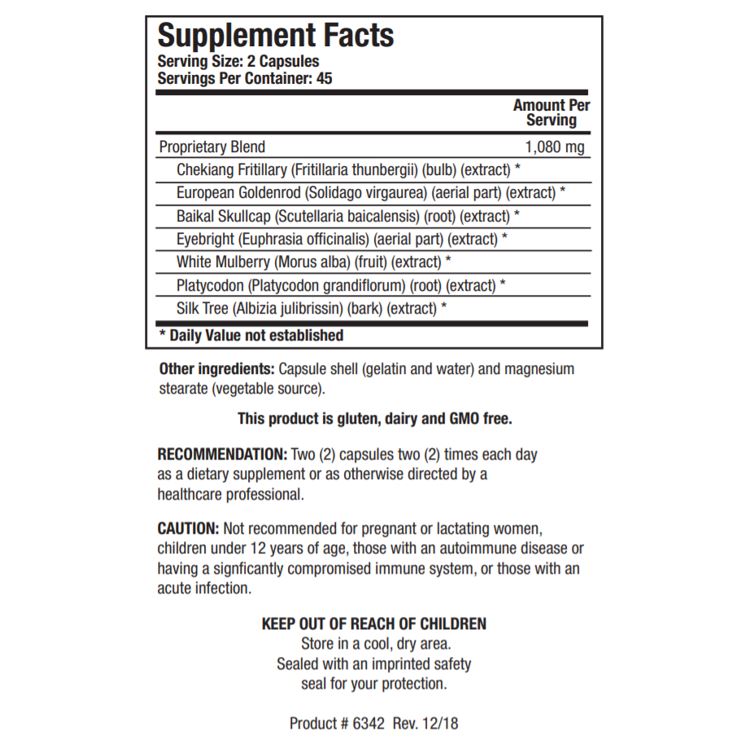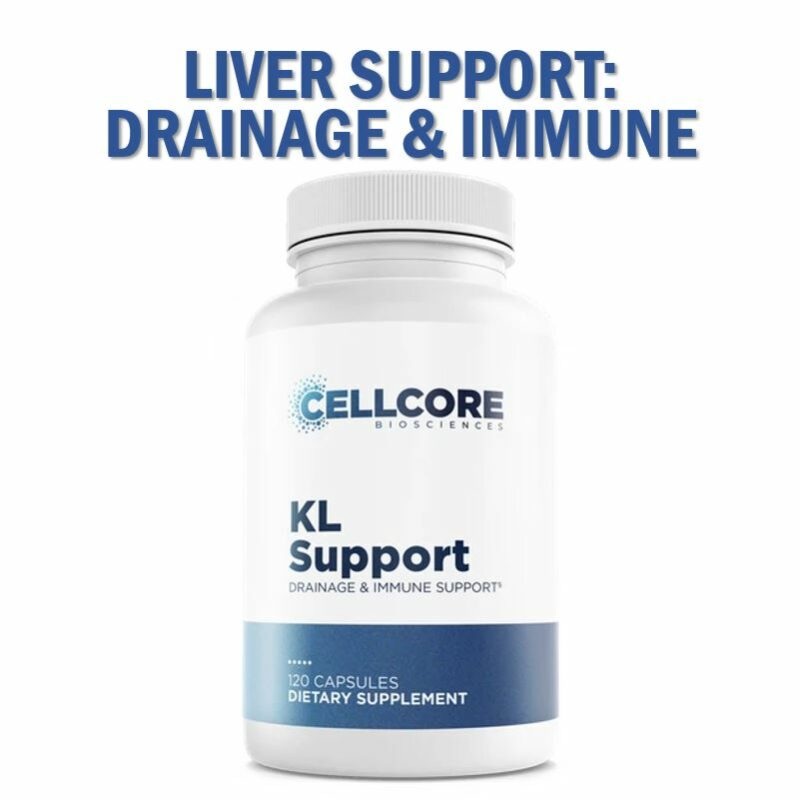Description
The immune system consists of two branches, cellular immunity and humoral immunity. The first depends upon the active participation of multiple cell types, including a variety of phagocytic cells, to engulf invaders. Lymphocytes include highly specialized T cells, which proliferate and differentiate in the thymus gland. In a typical scenario, macrophages process ingested antigens and display recognition fragments on their surfaces. T helper cells acting as generals, read these antigens and in turn stimulate the production of T killer cells via lymphokines such as IL-2 and gamma interferon. Mast cells are a type of T cell embedded in tissues to fight localized infection. When they contact foreign materials, mast cells destroy them. In the process, they release histamine and other agents that cause edema, increase blood vessel permeability and recruit neutrophils to the site of inflammation.
Humoral immunity pertains to proteins of the blood and lymph. This aspect of the immune system relies on B cells which mature to plasma cells that secrete specific antibodies and complement proteins to fight infections. The complement system also triggers localized inflammation. T helper cells regulate the production and maturation of B cells through lymphokines. T suppressor cells gear down the immune response and thus are critical in allergy attacks and autoimmune conditions.
Immunity is a hallmark of the immune system. Recovery from an invader renders the individual immune to a subsequent attack. The underlying mechanism involves memory T cells and memory B cells. These memory cells multiply rapidly when they reencounter the stimulating antigen.
Allergies
An allergic response involves both cellular and humoral mechanisms. In contrast, other types of sensitivities to foods, such as lactose intolerance or sulfite sensitivity, do not employ the immune system. Allergic responses can be generally classified as immediate or delayed hypersensitivities. Immediate hypersensitivity represents a rapid overreaction of the immune system, often within minutes after exposure to the problem antigen. Particularly mast cells release histamine, leukotrienes and other stimuli that evoke swelling, hives, itchiness, copious mucus secretion and muscle spasm of the GI tract and bronchioles.
The reaction is mediated by IgE antibodies. Anaphylactic shock results from an immediate hypersensitive allergic reaction affecting the whole body. Depending on how food allergy is defined, estimates of the prevalence range from 2% to 25% of the US population. Immediate allergic reactions account for only a small fraction of food allergies.
Typical food allergies frequently involve IgG antibodies, and symptoms develop within hours or days after contact with a problematic food. Faulty digestion and increased gut permeability are often a root cause of multiple food allergies, because food allergens that are normally excluded, cross the intestinal barrier and enter the bloodstream.
The resulting immune complexes, if not cleared rapidly, can lodge in various organs and tissues where they can trigger inflammatory conditions. Food allergies have been linked to a range of autoimmune conditions, rheumatoid arthritis, for example.
Detecting food allergies can be perplexing. The delay between ingesting a specific food and the development of sometimes vague symptoms often masks food allergy reactions. The most frequent symptom is fatigue.
Other symptoms include delayed hypersensitivity, irritability, achy joints, blood sugar dysregulation, PMS-like symptoms, puffy eyes with dark circles and postnasal drip. Food allergies can cause asthma when they affect the respiratory tract; headache and insomnia when they affect the nervous system; and indigestion, irritable colon, constipation or diarrhea when they affect the GI tract. A variety of laboratory tests to detect IgE and IgG subclasses responsive to particular antigens have been developed. These have varying degrees of reliability.
Botanical Support of the Immune System
A variety of botanical preparations have been reported as useful nutritional adjuncts for protocols designed to help normalize immune processes:
Juglans nigra. Originating in Asia, Juglans nigra has a history of use in Greek and Roman traditions. It is said to be bitter, pungent, warm with cooling potential and is used with intestinal Qi stagnation. Black walnut leaf supports the immune system and normal tissue repair processes.
Olea europaea. Buds and leaves of olive trees contain oleuropein, a phenolic glycoside, and rutin, luteolin and hesperidin – flavonoid glycosides. The latter flavonoids possess well-defined antioxidant properties and affect aspects of the vascular system as well as the immune system. Oleuropein is the bitter principle of green olives. It can effectively prevent the oxidation of LDL in vitro. Antimicrobial properties of oleuropein have been reported, perhaps explaining the resistance of olive tree to microbial overgrowth.
Hydrangea arborescens. Contains thunberginols and hydrangenols which have been extensively studied by Japanese investigators. This family of compounds was shown to inhibit the release of histamine from rat mast cells and histamine-induced contraction of isolated guinea pig trachea. Thunberginol A administered to rats and mice normalized various aspects of immune function.
Hesperidin. The rutinoside of hesperitin. Hesperidin is the predominant flavonoid in lemons and sweet oranges. In orange, lemon, and grapefruit skins, hesperidin and hesperitin are mainly responsible for the antioxidant activity of methanolic extracts. It seems also to have a membrane‑stabilizing effect.(9) Effects in supporting the immune system have been reported.
Andrographis paniculata (Kalmegh). Folk traditions in India use this herb to support functions of the gastrointestinal tract, reduce flatulence, improve appetite and normalize liver function. Pretreatment of rats with extracts of this plant prevented carbontetrachloride induced liver damage. Leaf extracts and isolated andrographolide inhibited lipid peroxidation due to exposure to carbon tetrachloride.
Coriolus versicolor. Polysaccharide extracts of this mushroom are composed mainly of beta 1,4 glucan, together with some protein. This material has been in use in Japan, where it has been reported to enhance normal functioning of the immune system. For example, it improved T cell response in gut associated lymphoid tissue in mice. In rats, this extract increased B cells. The production of T cells increased in spleen and Peyer’s patches, but not thymus. These mushroom polysaccharide extracts are associated with superoxide dismutase activity.
Picrorrhiza kurroa. Roots and rhizomes contain a mixture of flavonoids, including glycosides, piroside and kutkoside, picrorhizin, and the phenolic ether, apocynin. Apocynin was shown to inhibit the neutrophil oxidative burst in vitro. Apocynin inhibited the formation of thromboxane A2, while stimulating the release of prostaglandins by isolated guinea pig pulmonary macrophages. Picrorrhiza abstracts were found to support normal of T and B cell function using rodent model systems.
Ligsuticum porteri. The Ligsuticum family contains a number of compounds with aromatic character. Osha has long been used in folk traditions in Southwestern United States and Northern and Central Mexico.
Other Nutritional Support
Dimethylglycine. Methyl donor. When lymphocytes were isolated from rabbits fed dimethylglycine and inoculated with viral or bacterial vaccines, they revealed higher proliferation rates than obtained from control animals. In addition, lymphocytes from immunized animals fed dimethylglycine showed a increased rate of DNA synthesis than controls.
Calcium borogluconate. Boron has a role in calcium and magnesium metabolism, and possibly vitamin D.
Boronate – containing polymer stimulated T cells in vitro.
Dosage:
Two (2) capsules two (2) times each day as a dietary supplement or as otherwise directed by a healthcare professional.
Active Ingredients:
Chekiang Fritillary (Fritillaria thunbergii) (bulb) (extract)*, European Goldenrod (Solidago virgaurea) (aerial part) (extract)*, Baikal Skullcap (Scutellaria baicalensis) (root) (extract)*, Eyebright (Euphrasia officinalis) (aerial part) (extract)*, White Mulberry (Morus alba) (fruit) (extract)*, Platycodon grandiflorum (root) (extract)*, Silk Tree (Albizia julibrissin) (bark) (extract)*. *Daily Value not established
Other Ingredients:
Capsule shell (gelatin and water) and magnesium stearate (vegetable source). This product is gluten and dairy free.
Quality made in the USA
Biotics produces tablets, capsules, powders and liquids in our Rosenberg, Texas, FDA-Registered, Texas Department of Health licensed, GMP-certified production and laboratory facility. Biotics products are tested in their state-of-the-art laboratory to ensure their safety, efficacy, and purity, and all Biotics Research products are gluten free.
Product Warnings:
KEEP OUT OF REACH OF CHILDREN.
These statements have not been evaluated by the Food and Drug Administration. This product is not intended to diagnose, treat, cure or prevent disease.










Reviews
There are no reviews yet.